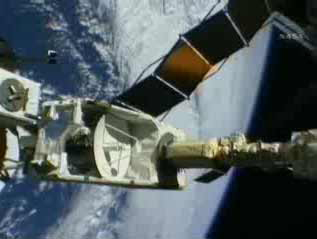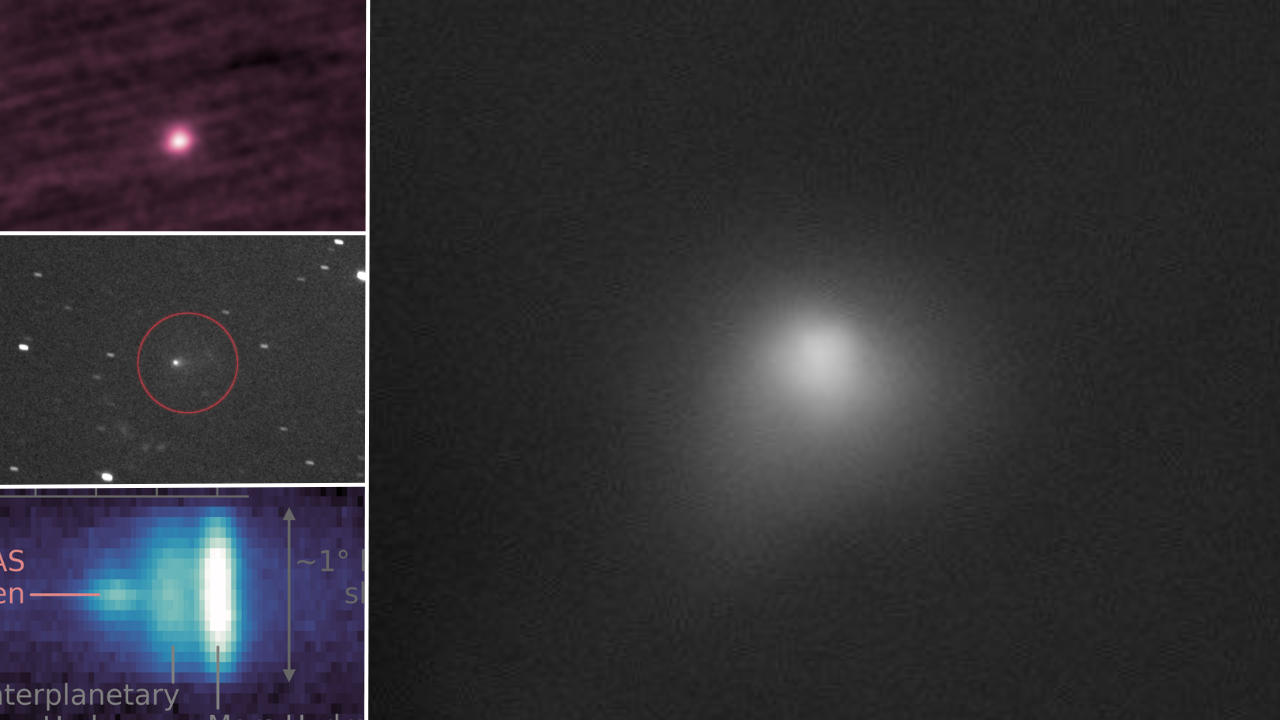Japanese Experiments Moved to Space Station

It was abanner day for Japan at the International Space Station Thursday, whereastronauts successfully installed a set of experiments on a brand new porchon the end of the outpost?s massive Japanese laboratory.
Astronautsused a Japanese robotic arm to move two experiments and a sophisticatedcommunications system from a carrier platform to the station?s new porch, whichextends out from Japan?s $1billion Kibo lab at the orbital outpost. The robotic arm, carrier platformand porch were all built by the Japan Aerospace Exploration Agency (JAXA) forthe station.
?It was avery exciting day,? said Tetsuro Yokoyama, JAXA?s deputy project manager forthe Kibo lab, during a late Thursday briefing.
Theday-long experiment move marked the first time the Kibo lab?s 33-foot (10-meter)robotic arm actually manipulated payloads on the station?sexternal porch, which Endeavour shuttle astronauts delivered to the outpostafter arriving last week. Despite some initial glitches with the arm?sgrappling device, the orbital work ultimately went on as planned.
?It allworked great and we were just happy to be part of this team,? said JAXAastronaut Koichi Wakata, who helped drive the Japanese robotic arm Thursday.Wakata, Japan?s first long-duration space resident, has lived aboard thestation since March and will return home on Endeavour next week.
Japan?sKibo lab porch is an external platform about 18 feet (5.6 meters) wide, 16feet (5 meters) high and 13 feet (4 meters) long. It can hold up to 10 differentexperiments at a time and has a small airlock and two windows so astronauts candeploy or move payloads as needed. The porch is the last piece of the station?sgiant Kibo lab, which also includes a largemain module the size of a tour bus and a smaller storage attic.
The threepayloads moved to the porch Thursday included: an inter-orbit communicationssystem for beaming down images and video from the station, an experiment tostudy the effect of the station's space environment on electronics and devices,and an X-ray observatory to scan the night sky.
Breaking space news, the latest updates on rocket launches, skywatching events and more!
Thecommunications system uses a dish antenna to beam images, data and voicecommunications to Earth by relaying them from the station to a Japanesesatellite that then sends it to Japan's Kibo mission control center at theTsukuba Space Center.
The SpaceEnvironment Data Acquisition System-Attached Payload, or SEDA-AP for short,contains several sensors for monitoring plasma, atomic oxygen, cosmic dust andradiation environment around the station. It has an extendable mast used tohelp collect measurements.
The finalpayload is the X-ray observatory, called MAXI. It has two X-ray detectors thatwill be used to scan the sky once every 90 minutes to study emissions fromdistant astronomical objects.
?We arevery, very happy to see that all the payloads were successfully transferred,?JAXA astronaut Akihiko Horsehide radioed the station from Kibo?s Japanesemission control center in Tsukuba, Japan.
Yokoyamasaid the new experiments and communications system were doing well after theirinstallation. They will undergo a series of tests after Endeavour leaves thestation next week and will likely begin full science observations by earlyfall, he added.
Endeavour?sseven-astronaut crew is in the middle of a 16-day mission to deliver thestation?s Japanese porch and a new crewmember. The shuttle is scheduled toleave the station next week and land July 31.
The shuttleastronauts are now gearing up for their mission?s fourth spacewalk on Friday, a7 1/2-hour excursion to replace four old solar array batteries.
- Video - The Kibo Lab: Japan's Hope in Space - Part 1, Part 2
- Video - Space Station to Get Japanese Porch
- SPACE.com Video Show - The ISS: Foothold on Forever
SPACE.comis providing continuous coverage of STS-127 with reporter Clara Moskowitz andsenior editor Tariq Malik in New York. Click here for missionupdates and SPACE.com's live NASA TV video feed.

Tariq is the award-winning Editor-in-Chief of Space.com and joined the team in 2001. He covers human spaceflight, as well as skywatching and entertainment. He became Space.com's Editor-in-Chief in 2019. Before joining Space.com, Tariq was a staff reporter for The Los Angeles Times covering education and city beats in La Habra, Fullerton and Huntington Beach. He's a recipient of the 2022 Harry Kolcum Award for excellence in space reporting and the 2025 Space Pioneer Award from the National Space Society. He is an Eagle Scout and Space Camp alum with journalism degrees from the USC and NYU. You can find Tariq at Space.com and as the co-host to the This Week In Space podcast on the TWiT network. To see his latest project, you can follow Tariq on Twitter @tariqjmalik.
